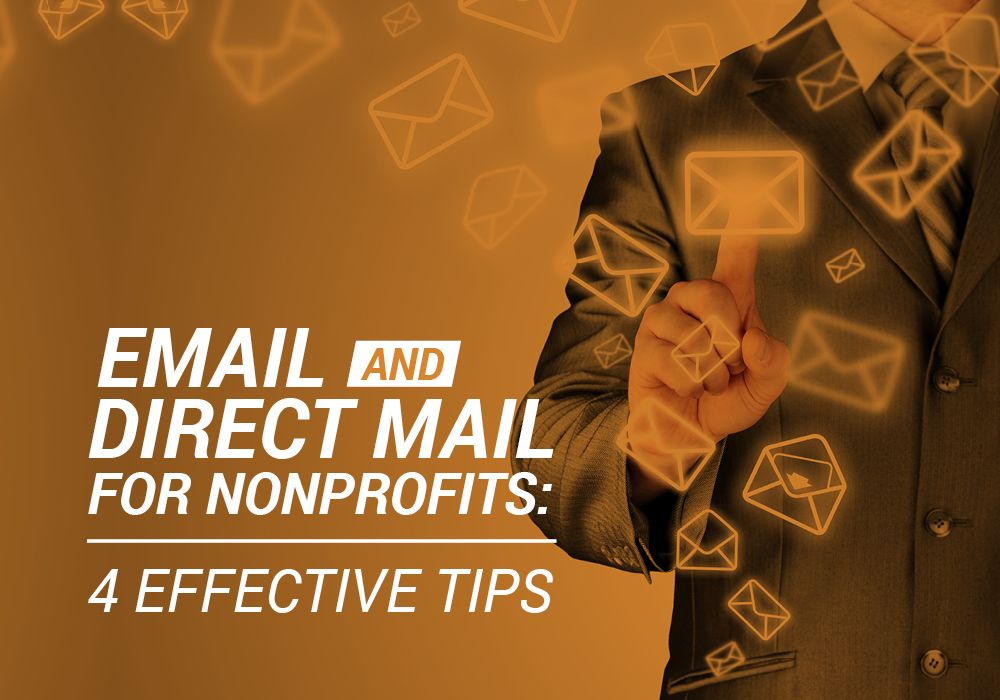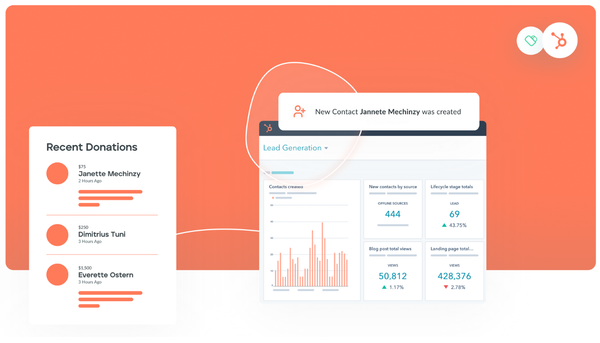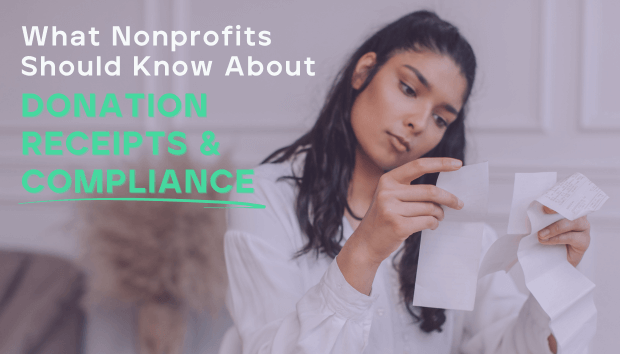Email and Direct Mail for Nonprofits: 4 Effective Tips
Email and direct mail are two of the most powerful nonprofit fundraising and marketing channels. Let’s discuss four tips for making the most out of each.

This post was contributed by GivingMail.
Throughout the development of the fundraising sector, direct mail has proven to be the most effective channel for raising money. Yet in recent years, email marketing has become another powerful way to convey your message to increasingly large groups of people. If done correctly, both of these mediums yield large returns and tremendous growth for your nonprofit.
Direct mail marketing is a long-trusted way of asking individuals for contributions, and is known to produce the highest levels of interaction among potential donors. This consistently proves effective because of the tangible aspect of the appeal, which often helps form a personal connection and keeps the organization at top of mind for longer.
Email marketing, however, is the newer, cheaper, and faster form of marketing that can make your nonprofit campaign as effective as possible. The convenient nature of an email, complete with a direct link to donate, may appeal to a younger and more technologically savvy demographic.
Whichever medium you choose for your marketing campaign, there are certain practices that prove to yield the highest donations. At GivingMail, we specialize in equipping fundraising organizations with the tools they need to raise more for their causes via strategic direct mail appeals. Throughout our many years of fundraising experience, however, we’ve come to realize that many of these tactics can be applied to email marketing as well.
If you want to bring in significant fundraising revenue for your organization through a combination of email and direct mail appeals, we suggest that you:
- Target a specific audience
- Make giving as easy as possible
- Encourage multiple opportunities for engagement
- Invest in the right software
Nearly as important as what you are marketing, is who you are marketing to. Learning your target audience and catering to their donation tendencies are key in their decision to support your cause or not. Let’s get started.
1. Target a specific audience
Whenever you craft your message, whether it be for an email or a direct mailing, you should always have your specific audience in mind. You can start with a basic template or format, but be sure to adjust your communications to specific audiences as you go.
For example, you might send a different message to current donors, prospects, lapsed donors, major donors, recurring donors, supporters, volunteers, and more. Understanding and segmenting your previous donors and contacts ensures you produce more organized and structured mailings that will resonate strongly with the recipient.
With that said, by knowing your donors, along with their contributing tendencies and values, you can craft messages that specifically target the habits of your intended audience. Focusing on previous donors, and which strategies worked for them, can boost your open, response, and donation rates—all factors indicating a successful nonprofit campaign.
Segmenting you donors based on prior contribution data can help maximize the power of your mailings and significantly increase donations. Additionally, it is important to remember the incredible value the donor provides for your nonprofit campaign. Appealing to how critical a role they play in your success will motivate your audience to continue to contribute.
Not only is it important to segment your target audience to best represent your cause in your phrasing, but it is also the key to knowing which mediums to leverage in your outreach.
For example, younger generations may prefer email, while older generations may prefer the more traditional version of direct mail. Or, if you’d rather avoid sweeping generalizations, you can even look into each individual’s previous engagement history. If Donor A responds more often to your direct mail appeals, it’s a good idea to continue sending them—even if they’d be considered a “younger” contributor.
2. Make giving as easy as possible
Anticipating the easiest and most convenient ways your contributors can donate will be a greatly appreciated step in the fundraising process. And by giving the user more tools and options to give, you can avoid missed donations because of overwhelming and confusing processes.
For example, you’ll want to include a reply envelope for direct mail appeals and a link to your online donation form in your emails. You can even include the URL for your online donation form in your physical fundraising letter or create a QR code that the reader can scan.
This way, you allow (and encourage) users to make a donation while your call to action is still fresh in their mind. New technologies such as mobile phone payments are fast and easy methods that users would be excited to use.
It is well known that the younger generations, while increasingly tech savvy, have continually decreasing attention spans. Appealing to both of these tendencies, fast, technologically driven donation initiatives are a clear choice for marketing to all sorts of supporters. Simply put, the more convenient, the better.
3. Encourage multiple opportunities for engagement
Another way to boost the effects of your email and direct mailings is by offering a multitude of unique ways that the recipient can get involved. For example, you should provide additional opportunities for support that’s not necessarily another donation request.
If you’re reaching out to donors who have given recently, you might encourage them to request a matching gift from their employer. Gift matching is a great way to generate higher donation revenue by stressing that contributions go twice as far.
In fact, corporate gift matching has been proven to boost donation revenue. Studies show that 78% of donors have no idea that donation matching is available. Additionally, 84% of people said they would be more inclined to make a charitable contribution if their donation would be matched. Your direct mail and email campaigns can promote this powerful opportunity and encourage recipients to research their own eligibility for these programs, thus setting yourself up for increased corporate funding.
On the other hand, supporters who have yet to make a financial contribution or simply are unable to at the time being might be willing to volunteer for an event or make an in-kind donation. On top of just monetary donations, people really enjoy donating their time to support a cause they care about. Extend an invitation to your previous donors asking them if they would like to volunteer to help drive your mission forward!
Catching donors while they are in the giving spirit is only half the battle when looking for a charitable contribution. It is best to build a relationship that can grow over time, ensuring supporters are considered for more than just their wallets.
4. Invest in the right software
Like just about any big nonprofit undertaking, your email and direct mail marketing software can make a big difference in the time, energy, and resources you’ll need to dedicate to your outreach. Specifically, the right tools make the process easier and more cost-effective so you can invest more into your mission.
If you’re not sure where to get started, you should definitely look into the following types of tools and resources:
- Email marketing and automation software to send personalized, targeted emails to supporters
- Direct mail marketing and fundraising platform to streamline the printing, packing, and sending of fundraising letters and other physical appeals
- CRM (constituent relationship management) system to collect, organize, and analyze a wealth of fundraising and marketing data
Using the right nonprofit software and tools can make your life easier as a proprietor and ensures your campaign runs more smoothly. While these tools will typically require an upfront investment, you’ll surely make it all back and more when you see the powerful results of your mass marketing efforts.
Many attributes of your nonprofit campaign influence its ability to generate donation revenue, yet none are more important than the medium you use to reach out.
Taking both email and direct mail into consideration, it is important to recognize the powerful ways in which the two channels can work together to reap significantly greater results. By investing in the tools you need for effective email and direct mail strategies, you will reap the benefits of these long-proven successes.
Guest Author: Grant Cobb
Grant Cobb is a fundraising specialist with over 6 years of experience in the nonprofit space. Currently the head of marketing and analytics at GivingMail, he is a huge proponent of data-driven decision making and the push to bring high-level analytics and fundraising to all.





